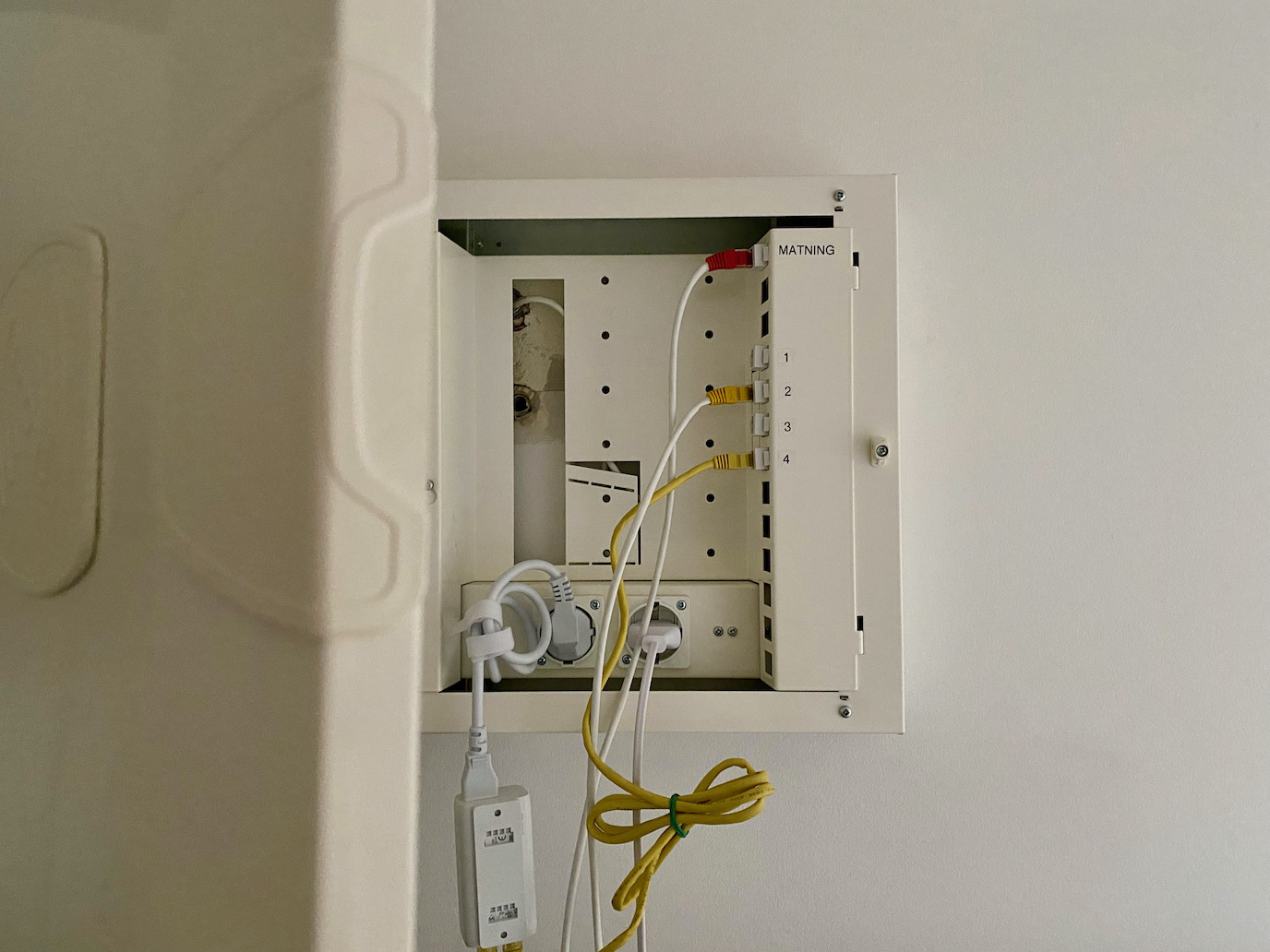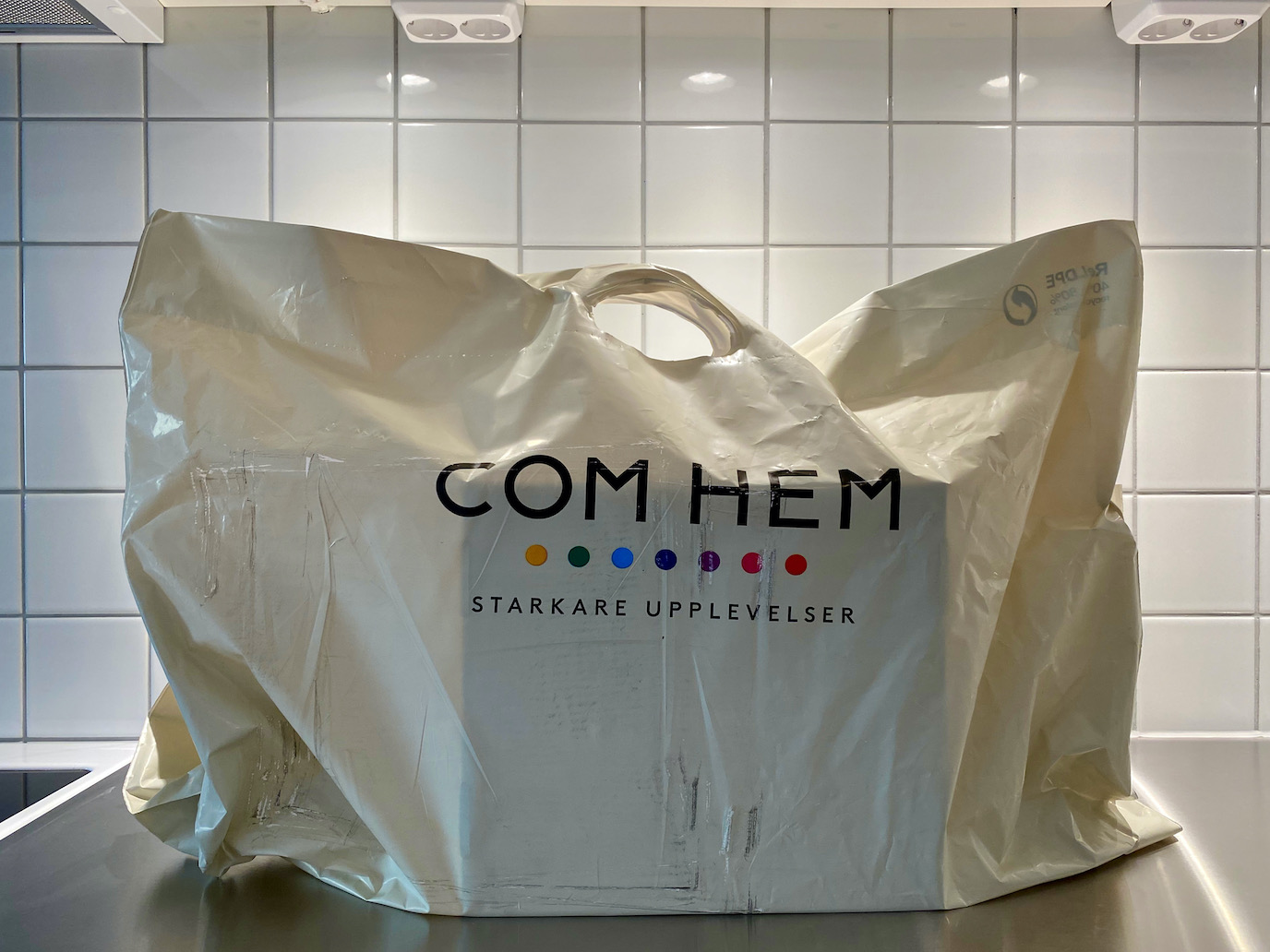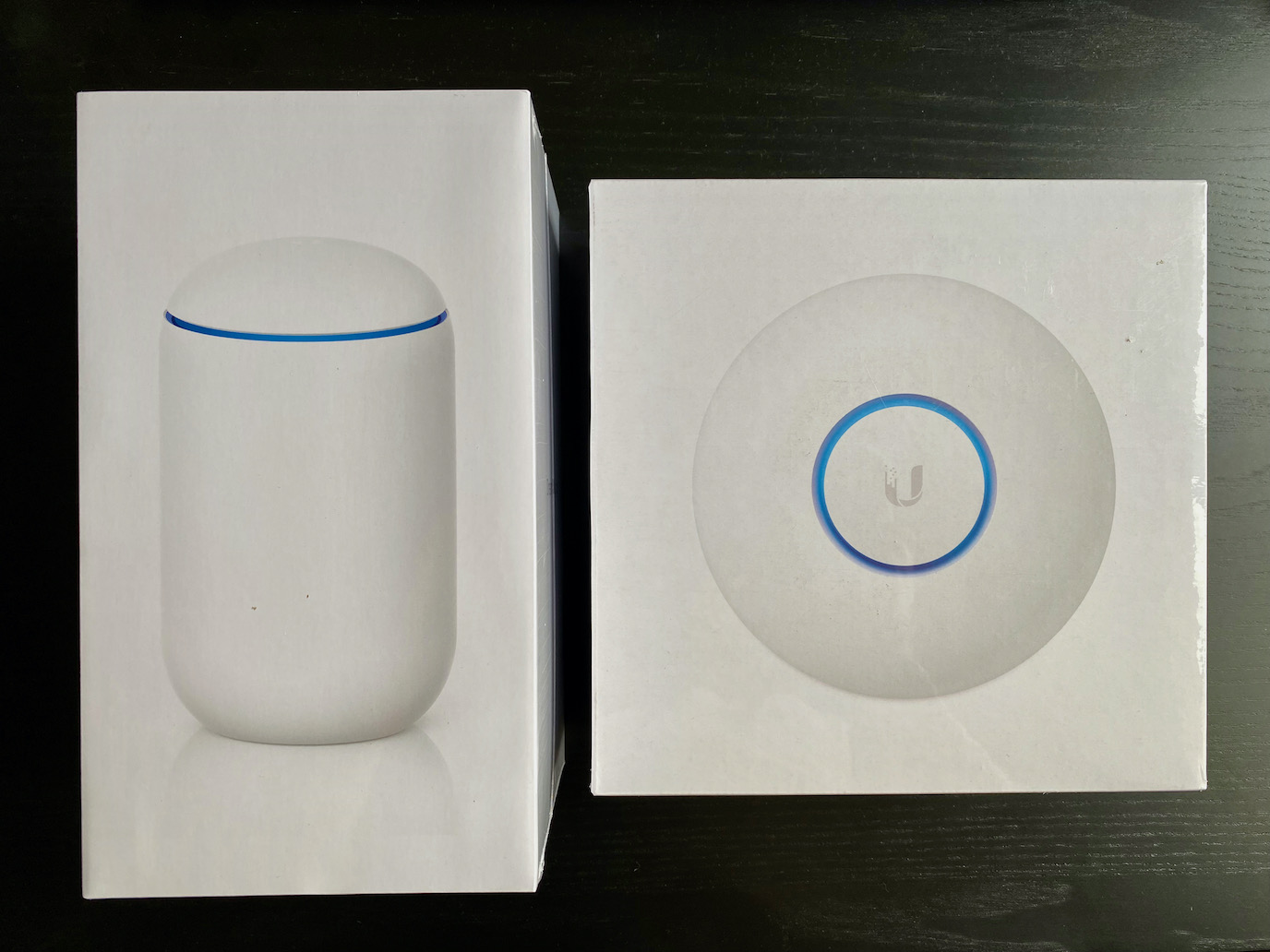Unifi
For a very long time my wifi was served faithfully by an Airport Extreme 6th generation, the last of its kind, with 802.11ac support. It didn’t have too many options to tinker with but it proved to be very reliable and strong enough to cover my ~60 square metre apartment in Budapest, even with suboptimal placement.
Here in Stockholm, however, I started having problems. The apartment we ended up chosing is L-shaped. One leg is a corridor from which a row of rooms open: two offices and the bedroom with the bathroom on the opposite wall. The other leg is the combined living room and kitchen.
There is a box on the wall of the corridor where the net comes in. The box also includes four LAN ports which carry a wired connection to all of the rooms. I have seen this elsewhere in Sweden so I assume it is something they tend to install after renovating older buildings and newer ones come with cabling already built-in.

Ideally one would place the modem from the ISP in the box and optionally link some fixed clients up using the cabling. Only the box is metal, which I’m sure does wonders for the radio signal, and with the awkward placement and bandwidth congestion the signal becomes pretty dodgy by the time it reaches the living room. Also, Com Hem gave me a router which doesn’t fit.

The good part is that the endpoint is simple ethernet, you can bring your own router. However, not even the Apple one was capable of covering the whole apartment without some significant packet loss. After some experiments I ended up with using the ISP’s router in the hall and connecting the Airport Extreme via LAN in the living room. Both had their wifi on with the same SSID, which is the most basic optimization I could think of. Fixed clients such as the TV ended up on the stronger network while moving ones like the phones were more hit-and-miss.
I know enough about networking that I know I don’t know enough. Therefore, after some reading, I came to the conclusion that for me Ubiquiti’s all-in-one solution, the Unifi Dream Machine, would be the best choice as an upgrade. I ordered it along with a Unifi NanoHD AP from Dustin and they arrived the following day.

For the setup I downloaded the accompanying iOS app. It found the UDM via Bluetooth, had me create a Ubiquity account, tested the WAN (all 600 of the Megabits were there), then moved over to the newly created wifi. All this in about ten minutes.
Out of the box the router lives on 192.168.1.1 but my Pi-hole acting as a DHCP server was set up for the 192.168.0.x range. I was impressed that resolving this was as simple as rewriting the UDM’s IP and switching off its DHCP in the LAN settings. The changes worked without restarting even.
The experience in the living room was already much better with the UDM and then came the NanoHD. Adding it was as easy as plugging in and adopting it in the router software. The AP supports (only works with) PoE, which the router doesn’t, but it comes with an adapter in the box. It went right into the wall-mounted housing in the hall.
After a day of use I’m very satisfied. Setup was seamless, the network is stable and fast, the clients happily roam around, and there is a plethora of pretty stats to look at on the dashboard. By now the software learned the make and model of every client, too.
As an added bonus the UDM is substituting as an excellent blue nightlight in the hallway.